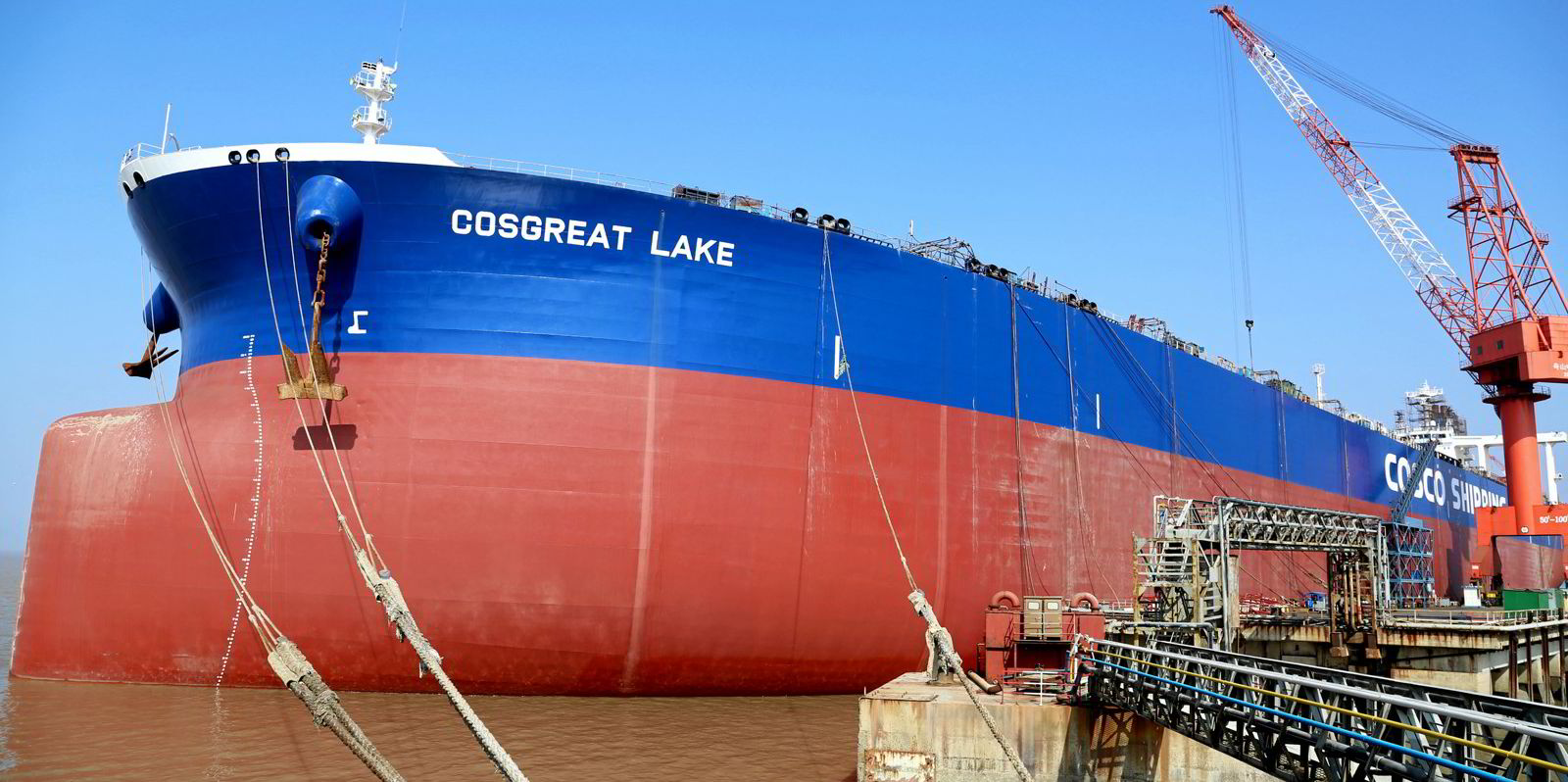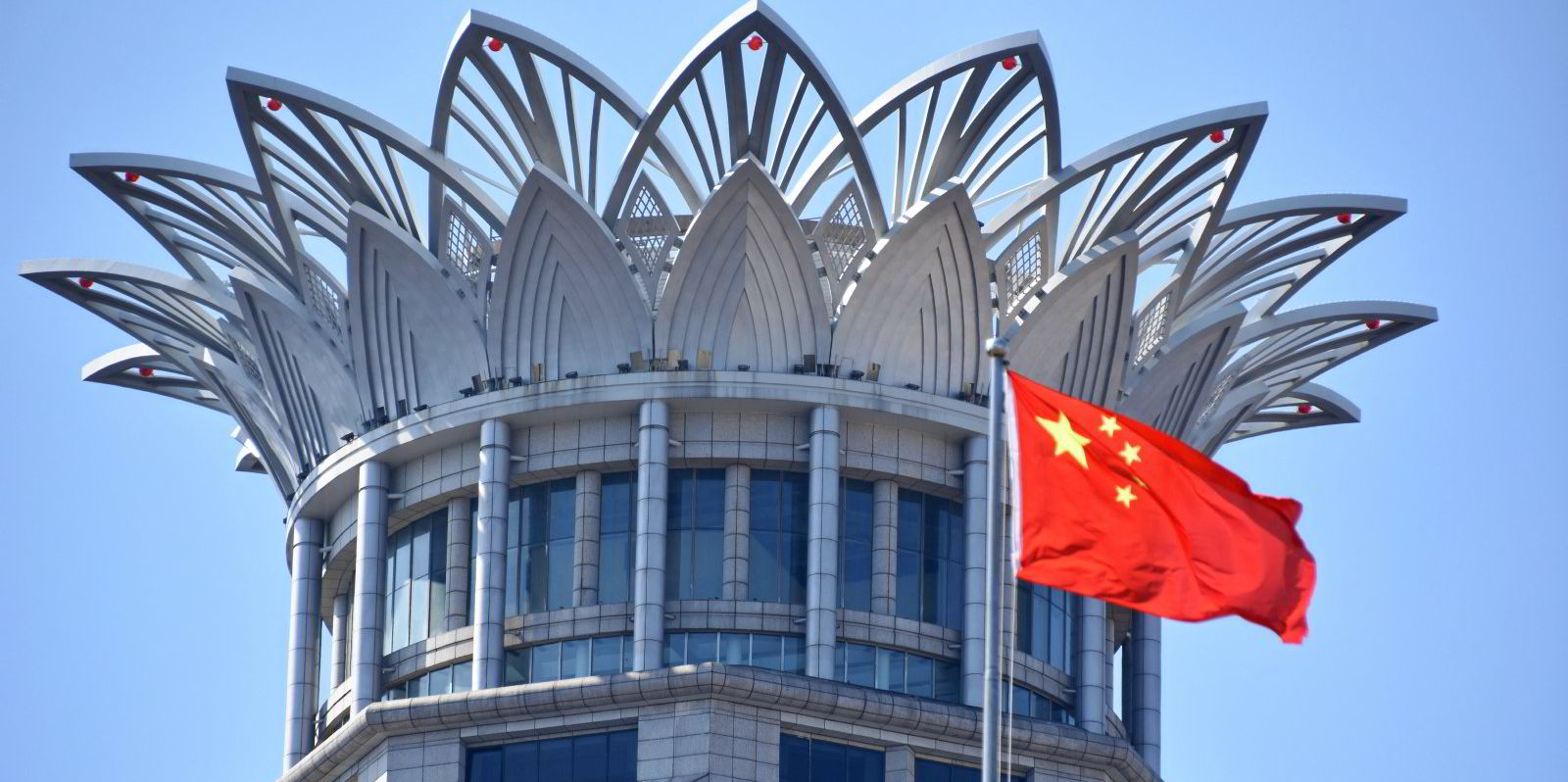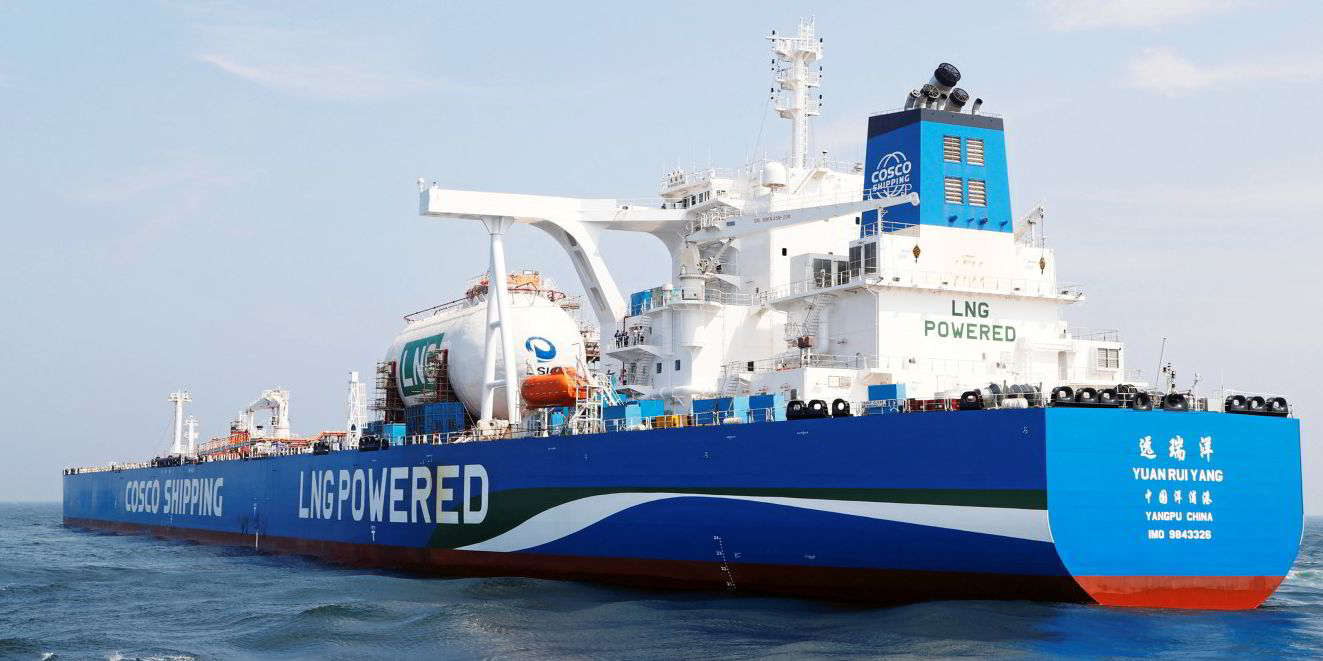Cosco Shipping Energy Transportation has achieved a reportedly firm price for the first secondhand VLCC sale of 2023.
The tanker arm of state conglomerate China Cosco Shipping has sold the 298,833-dwt Cosgreat Lake (built 2002) to Middle Eastern interests for what Clarksons said is “very high $30ms”.
The UK shipbroker said the price was further evidence of the “firming of secondhand tanker asset values” since the start of last year.
A total of 79 VLCCs changed hands in the secondhand market in 2022, according to figures compiled by Clarksons.
Cosco Energy has a fleet of 46 VLCCs with an average age of 10 years, according to VesselsValue.
However, the Shanghai and Singapore-listed shipowner does have a series of VLCCs dating from the early 2000s, according to a fleet list on its website.
Those ships include the Cosgreat Lake, the 299,100-dwt Cosbright Lake and Cosglory Lake (both built 2003) and 297,400-dwt Xin Jin Yang (built 2004) and Xin Ning Yang (built 2005).
The Cosgreat Lake was the first VLCC to be built by China’s Nantong Cosco KHI Ship Engineering (Nacks) — a joint venture between Kawasaki Shipbuilding Corp and China Ocean Shipping (Group) Co (Cosco) — and the second VLCC built in China.
Cosco Energy has repeatedly said it intends to remove the older vessels from its fleet due to their growing inefficiency against more modern tonnage and concerns over their safety management and high emissions of greenhouse gases.
Cosco Energy also offloaded three elderly suezmax tankers in 2022 — the 159,100-dwt Da Ming Hu (built 2003), and 159,500 Da Li Hu and Da Yuan Hu (both built 2004).
The latter two ships were reportedly sold to Lila Global, the rapidly expanding shipowning company of cash-buying giant GMS.
Dr Anil Sharma-backed Lila Global, which recently named Steve Kunzer as its new chief executive, paid a reported $16.5m for each of the two ships.
In November last year, Cosco Energy reported a 44% jump in net profit for the first nine months of 2022 on the back of the hot LNG market.
The company said net income for the January to September period was CNY 6.4bn ($880m) versus the CNY 4.4bn seen 12 months before.





